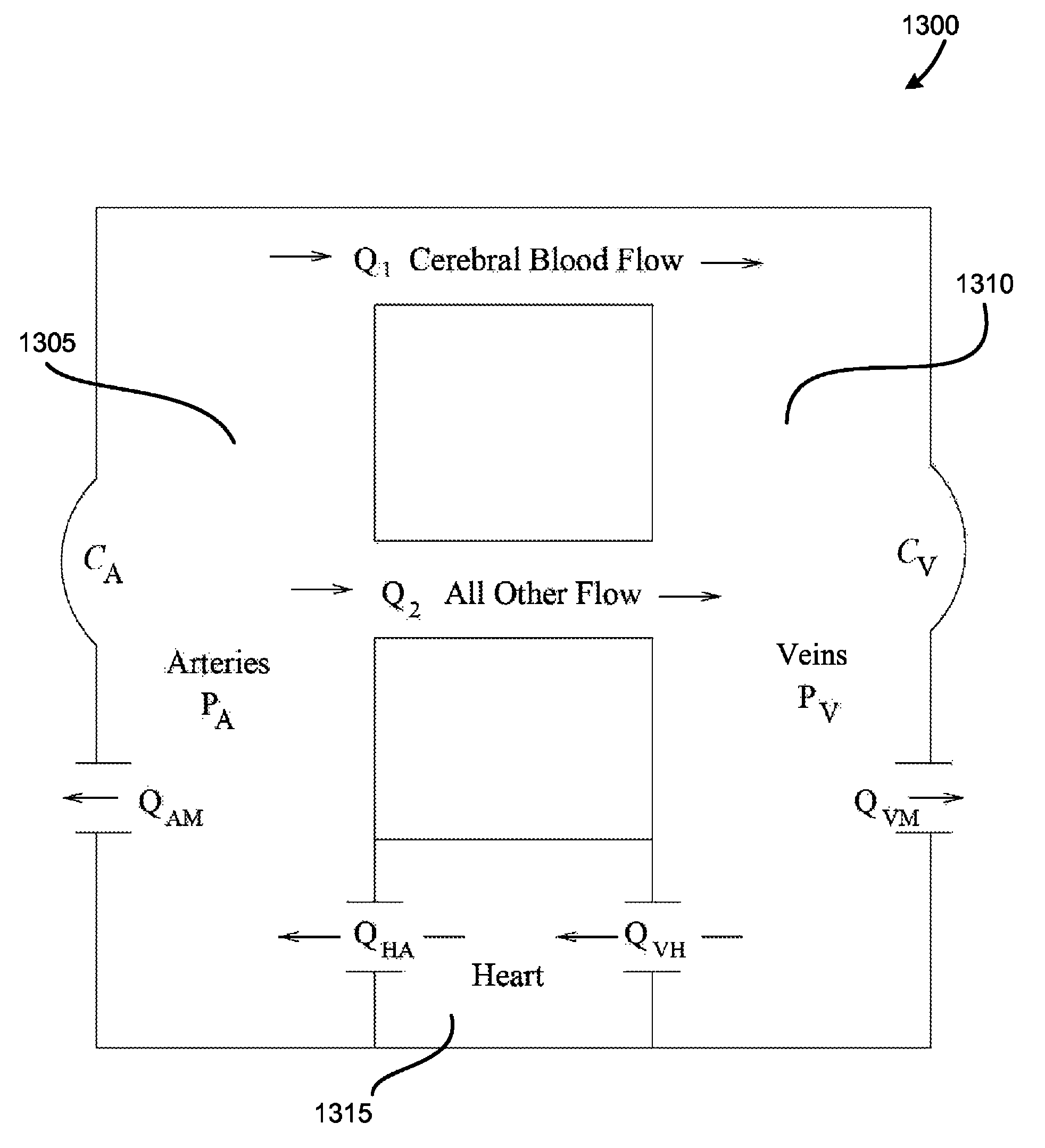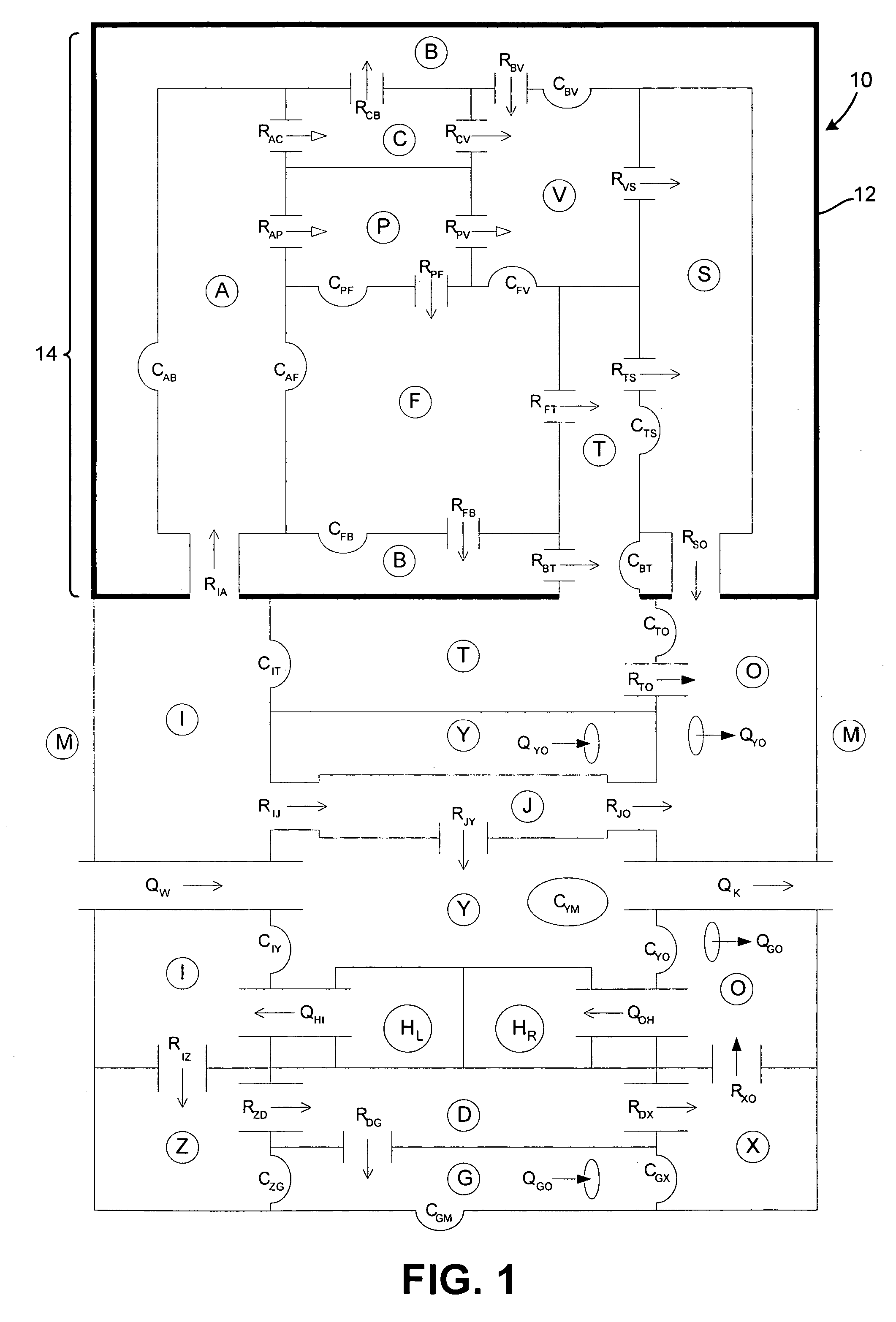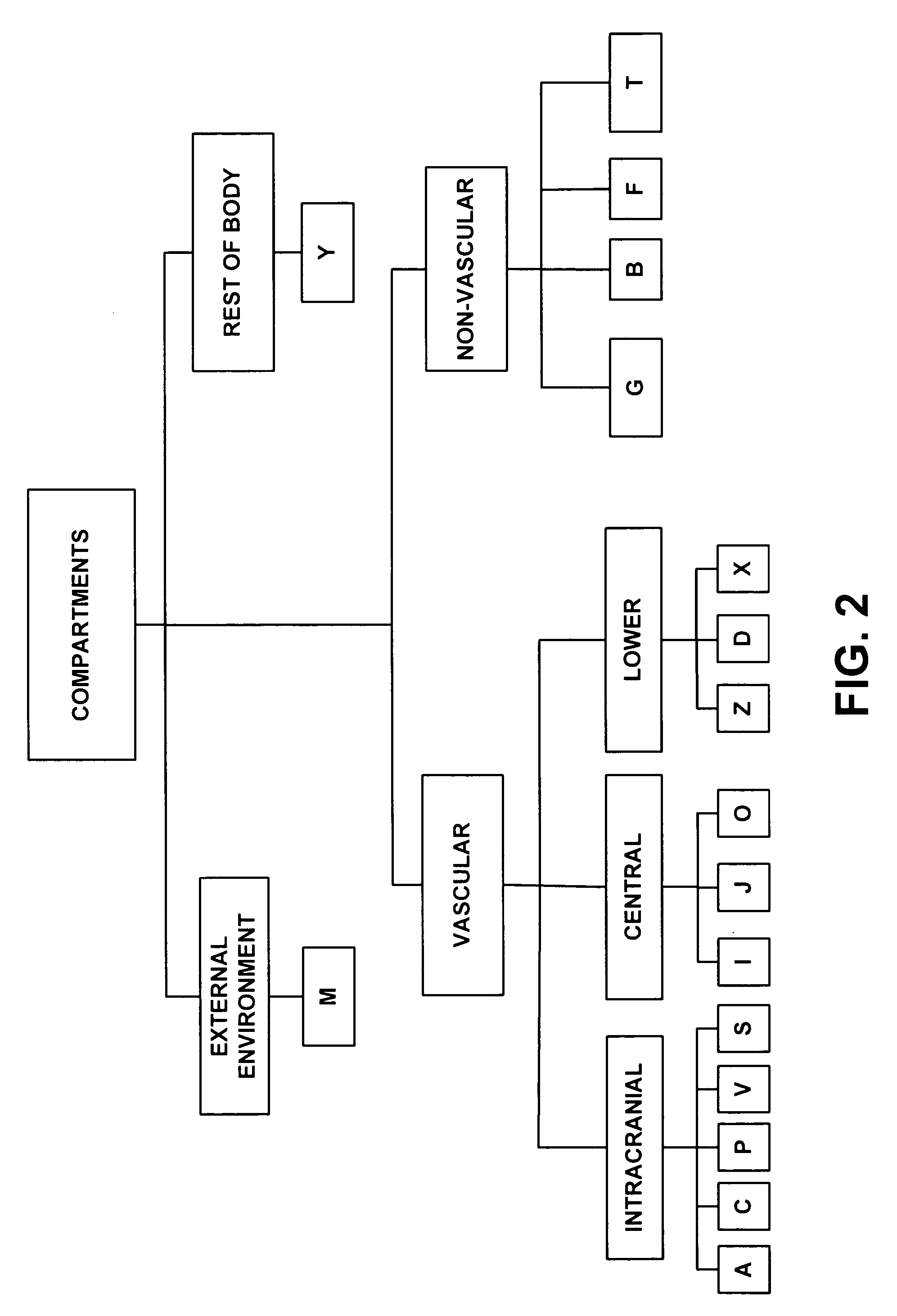Mathematical circulatory system model
a circulatory system and mathematical technology, applied in the field of mathematical circulatory system models, can solve the problems of inability of closed system models to incorporate the influence of important extracranial factors on intracranial pressure dynamics, unsuitable for studying multiple parameter changes, and the effect of interconnected subsystems on each other, and one of the main limitations of lumped-parameter approach
- Summary
- Abstract
- Description
- Claims
- Application Information
AI Technical Summary
Benefits of technology
Problems solved by technology
Method used
Image
Examples
Embodiment Construction
[0040]The present disclosure is directed to a mathematical circulatory system model. In one aspect, the system and method of the disclosure includes a lumped-parameter model utilizing one or more differential equations representing pressure dynamics. One exemplary embodiment of the present disclosure is set forth in greater detail below with reference to FIGS. 1 to 11. This first embodiment is directed to a whole-body mathematical model for simulating intracranial pressure dynamics. Another exemplary embodiment of the present disclosure is set forth in greater detail below with reference to FIGS. 12 to 21. This second embodiment is directed to a simplified mathematical circulatory system model simulating nervous system regulatory mechanisms.
Whole-Body Embodiment for Simulating Intracranial Pressure Dynamics
[0041]In one embodiment a whole-body mathematical model for simulating intracranial pressure dynamics is provided. As described in U.S. Provisional Patent Ser. No. 60 / 409,551, whi...
PUM
 Login to View More
Login to View More Abstract
Description
Claims
Application Information
 Login to View More
Login to View More - R&D
- Intellectual Property
- Life Sciences
- Materials
- Tech Scout
- Unparalleled Data Quality
- Higher Quality Content
- 60% Fewer Hallucinations
Browse by: Latest US Patents, China's latest patents, Technical Efficacy Thesaurus, Application Domain, Technology Topic, Popular Technical Reports.
© 2025 PatSnap. All rights reserved.Legal|Privacy policy|Modern Slavery Act Transparency Statement|Sitemap|About US| Contact US: help@patsnap.com



